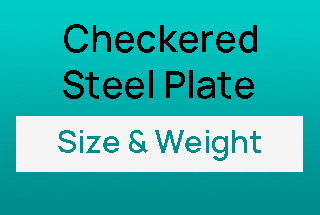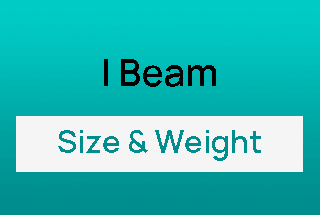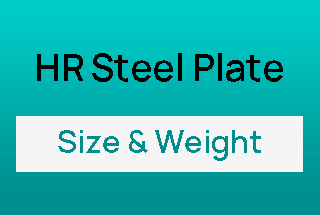
Imagine the frustration of miscalculating the weight of a steel plate. In this comprehensive guide, our seasoned mechanical engineering expert will walk you through the intricacies of the MS plate weight formula, density factors, and common pitfalls. Discover how to optimize your projects with precise calculations and insider tips that will save you time and money.
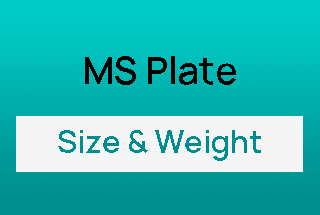
When working with carbon steel plates, accurately calculating their weight is crucial for various applications such as construction, transportation, and heavy machinery manufacturing.
Imagine a scenario where a construction team underestimates the weight of MS plates needed for a bridge. This miscalculation could lead to structural failures, project delays, and increased costs. Thus, knowing the exact weight helps in planning transportation, estimating costs, and ensuring structural integrity.
In this comprehensive guide, we will explore the MS plate weight formula, density factors, and common sources of error to help you make precise calculations and optimize your projects.
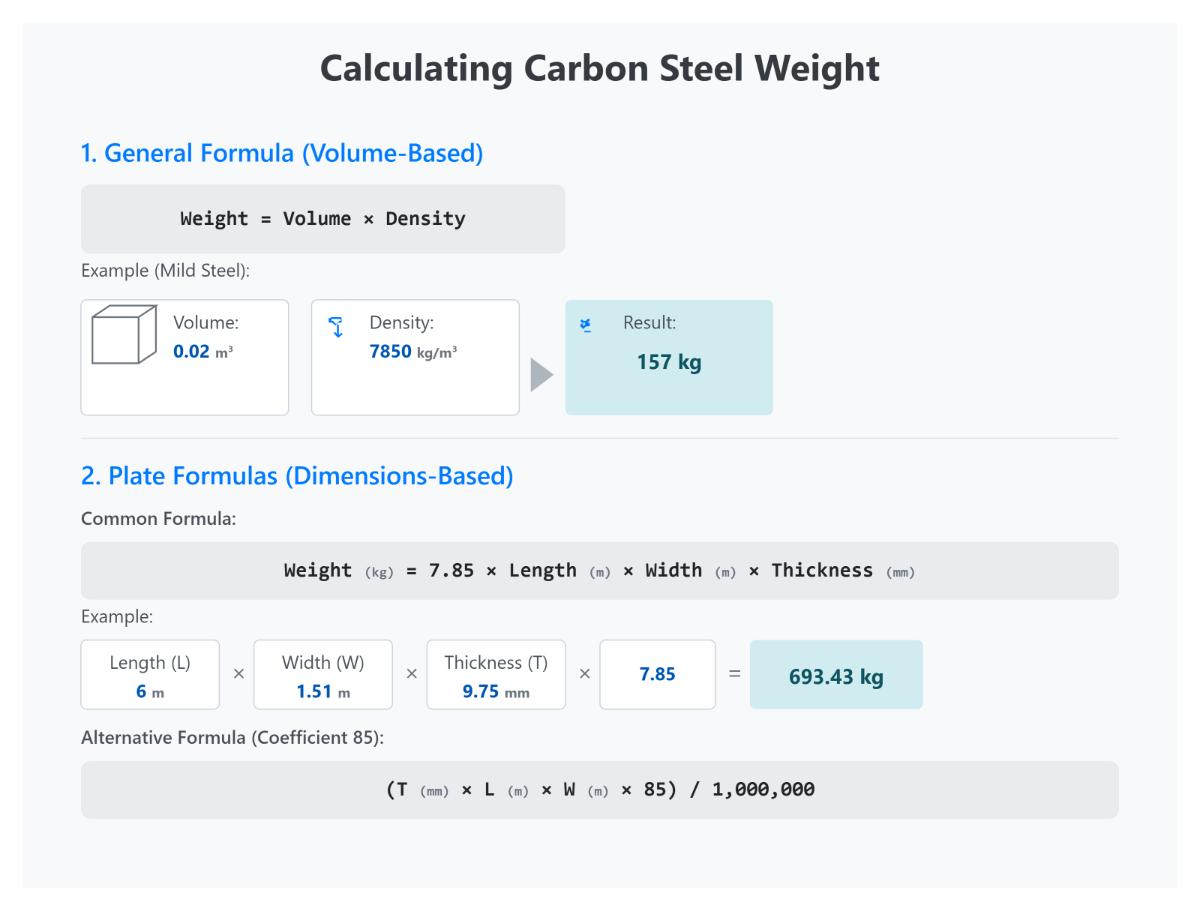
The density of mild steel is approximately 7,850 kg/m³. This constant is vital for the weight calculation formula and remains consistent regardless of the plate’s dimensions.
To calculate the weight of an MS plate, measure its length (L), width (W), and thickness (T). Ensure these dimensions are in the same unit for consistency. Common units used are meters (m) and millimeters (mm).
For example, let’s consider a plate with the following dimensions:
The volume of the MS plate is calculated using the formula:
Volume= Length x Width x Thickness
Substituting the given dimensions:
Volume=2m x 1m x 0.01m=0.02 m3
Using the volume obtained, multiply it by the density of mild steel to get the weight:
Weight= Volume x Density
Weight=0.02m3 x 7850kg/m3 = 157kg
The most commonly used formula for calculating the weight of a carbon steel plate is:
Weight (kg) = 7.85 × Length (m) × Width (m) × Thickness (mm)
For example, if a steel plate measures 6 meters in length, 1.51 meters in width, and 9.75 millimeters in thickness, its theoretical weight can be calculated as follows:
7.85 × 6 × 1.51 × 9.75 = 693.43 kg
Another specific calculation method uses 85 as the density coefficient:
Weight (kg) = Thickness (mm) × Length (m) × Width (m) × 85 / 1,000,000
The density of carbon steel plates may vary due to different carbon contents. The density factor of most carbon steel plates is approximately 7.85 g/cm³. For instance, a specific type of carbon steel known as S50C has a recorded density of 7.84 g/cm³, which is close to the density of most carbon steels.
Moreover, it’s important to note that the thickness dimension of a steel plate is one of the main factors affecting its load-bearing capacity. Therefore, when calculating the weight, one should ensure that the thickness value used is accurate to avoid safety risks or unnecessary waste. According to national standards, there are explicit regulations for the thickness deviation of steel plates.
For example, the positive tolerance for a qualified thickness of 12mm is 1.16mm, and the negative tolerance is 0.76mm. This means that in actual applications, the thickness of the steel plate may deviate slightly. However, when calculating the weight, the theoretical weight is usually used, which is calculated based on the average of the maximum and minimum allowable thicknesses.
What is the density factor of carbon steel plates?
The density factor of carbon steel plates is approximately 7.85g/cm³. Furthermore, a specific type of carbon steel known as S50C has a recorded density of 7.84g/cm³, which is close to the density of most carbon steels. Therefore, it can be considered accurate to say that the density factor of carbon steel plates is approximately 7.85g/cm³.
To simplify the calculation process, you can utilize a mild steel plate weight calculator or refer to a comprehensive MS plate weight chart. These tools provide quick and accurate results for various plate dimensions in both metric and imperial units.
Related calculator:
This plate weight chart applies exclusively to mild steel. For information on the gauge sizes of sheets, you can refer to the following post:
Table 1: Steel Plate Thickness and Weight – Metric Units
| Thickness (mm) | Weight (kg/m²) | Weight (lb/ft²) |
|---|---|---|
| 0.2 | 1.57 | 0.32 |
| 0.25 | 1.96 | 0.40 |
| 0.3 | 2.36 | 0.48 |
| 0.35 | 2.75 | 0.56 |
| 0.4 | 3.14 | 0.64 |
| 0.45 | 3.53 | 0.72 |
| 0.5 | 3.93 | 0.80 |
| 0.55 | 4.32 | 0.88 |
| 0.6 | 4.71 | 0.96 |
| 0.65 | 5.1 | 1.04 |
| 0.7 | 5.5 | 1.13 |
| 0.75 | 5.89 | 1.21 |
| 0.8 | 6.28 | 1.29 |
| 0.9 | 7.07 | 1.45 |
| 1 | 7.85 | 1.61 |
| 1.1 | 8.64 | 1.77 |
| 1.2 | 9.42 | 1.93 |
| 1.3 | 10.21 | 2.09 |
| 1.4 | 10.99 | 2.25 |
| 1.5 | 11.78 | 2.41 |
| 1.6 | 12.56 | 2.57 |
| 1.7 | 13.35 | 2.73 |
| 1.8 | 14.13 | 2.89 |
| 2 | 15.7 | 3.22 |
| 2.2 | 17.27 | 3.54 |
| 2.5 | 19.36 | 3.97 |
| 2.8 | 21.98 | 4.50 |
| 3 | 23.55 | 4.82 |
| 3.2 | 25.12 | 5.14 |
| 3.5 | 27.48 | 5.63 |
| 3.8 | 29.83 | 6.11 |
| 3.9 | 30.62 | 6.27 |
| 4 | 31.4 | 6.43 |
| 4.5 | 35.33 | 7.24 |
| 5 | 39.25 | 8.04 |
| 5.5 | 43.18 | 8.84 |
| 6 | 47.16 | 9.66 |
| 7 | 54.95 | 11.25 |
| 8 | 62.8 | 12.86 |
| 9 | 70.65 | 14.47 |
| 10 | 78.6 | 16.10 |
| 11 | 86.35 | 17.69 |
| 12 | 94.2 | 19.29 |
| 13 | 102.1 | 20.91 |
| 14 | 109.9 | 22.51 |
| 15 | 117.75 | 24.12 |
| 16 | 125.6 | 25.72 |
| 18 | 141.3 | 28.94 |
| 20 | 157 | 32.16 |
| 22 | 172.7 | 35.37 |
| 24 | 188.4 | 38.59 |
| 25 | 196.25 | 40.20 |
| 26 | 204.1 | 41.80 |
| 28 | 219.8 | 45.02 |
| 30 | 235.5 | 48.23 |
| 32 | 251.2 | 51.45 |
| 34 | 266.9 | 54.67 |
| 35 | 274.75 | 56.27 |
| 36 | 282.6 | 57.88 |
| 38 | 298.3 | 61.10 |
| 40 | 314 | 64.31 |
| 42 | 329.7 | 67.53 |
| 44 | 345.4 | 70.74 |
| 45 | 353.25 | 72.35 |
| 46 | 361.1 | 73.96 |
| 48 | 376.8 | 77.17 |
| 50 | 392.5 | 80.39 |
| 52 | 408.2 | 83.61 |
| 54 | 423.9 | 86.82 |
| 55 | 431.75 | 88.43 |
| 56 | 439.6 | 90.04 |
| 58 | 455.3 | 93.25 |
Table 2: Steel Plate Thickness and Weight – Imperial Units
| Nominal Size Thickness (inches) | Weight (lb/ft²) | Weight (kg/m²) |
|---|---|---|
| 3/16 | 7.65 | 37.35 |
| 1/4 | 10.2 | 49.80 |
| 5/16 | 12.8 | 62.50 |
| 3/8 | 15.3 | 74.70 |
| 7/16 | 17.9 | 87.40 |
| 1/2 | 20.4 | 99.60 |
| 9/16 | 22.9 | 111.81 |
| 5/8 | 25.5 | 124.50 |
| 11/16 | 28.1 | 137.20 |
| 3/4 | 30.6 | 149.40 |
| 13/16 | 33.2 | 162.10 |
| 7/8 | 35.7 | 174.30 |
| 1 | 40.8 | 199.20 |
| 1 1/8 | 45.9 | 224.10 |
| 1 1/4 | 51 | 249.00 |
| 1 3/8 | 56.1 | 273.90 |
| 1 1/2 | 61.2 | 298.80 |
| 1 5/8 | 66.3 | 323.71 |
| 1 3/4 | 71.4 | 348.61 |
| 1 7/8 | 76.5 | 373.51 |
| 2 | 81.6 | 398.41 |
| 2 1/8 | 86.7 | 423.31 |
| 2 1/4 | 91.8 | 448.21 |
| 2 1/2 | 102 | 498.01 |
| 2 3/4 | 112 | 546.83 |
| 3 | 122 | 595.66 |
| 3 1/4 | 133 | 649.36 |
| 3 1/2 | 143 | 698.19 |
| 3 3/4 | 153 | 747.01 |
| 4 | 163 | 795.84 |
| 4 1/4 | 173 | 844.66 |
| 4 1/2 | 184 | 898.37 |
| 5 | 204 | 996.02 |
| 5 1/2 | 224 | 1093.66 |
| 6 | 245 | 1196.20 |
| 6 1/2 | 265 | 1293.84 |
| 7 | 286 | 1396.37 |
| 7 1/2 | 306 | 1494.02 |
| 8 | 326 | 1591.67 |
| 9 | 367 | 1791.85 |
| 10 | 408 | 1992.03 |
As the chart indicates, there is a significant difference in weight between plates of different thicknesses.
This information is critical for applications such as construction, transportation, and heavy machinery manufacturing, where plates are used in various ways, from building structures to creating machine components.
By providing a comprehensive plate weight chart, MachineMfg enables engineers and fabricators to make accurate calculations and determine the weight of the plates they need for their projects.
This, in turn, helps them optimize their designs, select the appropriate materials, and improve the efficiency of their operations.
Related calculator: Stainless Steel Weight Calculator
Mild steel is an iron-carbon alloy with a carbon content ranging from 0.0218% to 2.11%. It is also called as carbon steel.
According to the carbon content in the material, we generally refer to steel with a carbon content of 0.06% to 0.25% as low-carbon steel; steel with a carbon content of 0.25% to 0.55% as medium-carbon steel; and steel with a carbon content of 0.60% to 1.03% as high-carbon steel.
(1) When the carbon content in steel exceeds 0.23%, the welding performance of the steel deteriorates. Therefore, low-alloy structural steels used for welding generally have a carbon content of no more than 0.20%.
(2) When the carbon content in steel is below 0.8%, as the carbon content increases, the strength and hardness of the steel increase while its plasticity and toughness decrease.
(3) When the carbon content is above 1.0%, as the carbon content increases, the strength of steel decreases instead. With an increase in carbon content, welding performance worsens (the special weldability can significantly decrease with steels having a higher than 0.3% carbon), cold brittleness and aging sensitivity increase, resistance to air rust corrosion decreases, making high-carbon steels susceptible to rusting when exposed to outdoor storage.
Generally, it also contains small amounts of silicon, manganese, sulfur and phosphorus. The higher the carbon content in carbon steel, the greater its hardness and strength but lower its ductility.
(1) According to their uses, carbon steel can be divided into three categories: carbon structural steel, carbon tool steel, and easy-to-cut structural steel. Carbon structural steel is further divided into two types: engineering construction steel and machine manufacturing structural steel;
(2) According to the smelting method, it can be divided into open hearth steel and converter steel;
(3) According to the deoxidation method, it can be divided into boiling steel (F), calm-steel (Z), semi-calm-steel (b), and special calm-steel (TZ);
(4) According to the carbon content, carbon steels can be classified as low-carbon steels (WC ≤ 0.25%), medium-carbon steels (WC 0.25% – 0.6%), and high-carbon steels (WC> 0.6%);
(5) Based on quality of the material, carbon steels are categorized as ordinary carbon steels(high in phosphorus & sulfur content), high-quality carbon steels(low in phosphorus & sulfur content), advanced high-quality steels(even lower in phosphorus & sulfur content than previous category )and special grade high-quality steels.
The density of mild steel, also known as low-carbon steel, is a critical factor in the accurate calculation of MS plate weight. Understanding the density and its implications is essential for engineers and professionals in the construction and manufacturing sectors.
Mild steel exhibits a consistent density across various sources, which is essential for reliable calculations. The standard values for the density of mild steel are:
These values are crucial when applying the weight calculation formula for MS plates, ensuring that the results are accurate and dependable.
Mild steel is predominantly composed of iron, constituting over 98% of its composition. The remaining percentage includes small amounts of alloying elements such as carbon, manganese, and silicon. The typical carbon content in mild steel ranges from 0.04% to 0.3%. This low carbon content contributes to the steel’s notable properties, including:
The density of mild steel remains relatively consistent due to its high iron content and the controlled amounts of other alloying elements. However, slight variations in density may occur based on the specific grades of mild steel and the precise composition of alloying elements. For instance, a higher manganese content might slightly increase the density, but these variations are typically negligible and do not significantly impact weight calculations for most practical purposes.
The density of mild steel is a fundamental parameter in the weight calculation formula for MS plates. By knowing the density, professionals can accurately determine the weight of steel plates based on their dimensions. This accuracy is vital for various applications, including:
To summarize, the density of mild steel is approximately 7,850 kg/m³, 7.85 g/cm³, or 0.284 lb/in³. This value is integral to the weight calculation formula:
Weight = Length x Width x Thickness x Density
Using this formula, professionals can accurately calculate the weight of mild steel plates, facilitating efficient project planning and execution.
Accurate unit conversions are crucial in engineering and construction projects, particularly when calculating the weight of materials like mild steel (MS) plates. Proper conversions ensure precise measurements, which are essential for structural integrity, cost estimation, and material procurement. This chapter provides essential conversion factors and examples to help you accurately switch between metric and imperial systems for weight calculations.
The metric system is widely used due to its simplicity. Here are the basic units:
The imperial system is commonly used in the United States and some other countries. Here are the basic units:
Understanding key conversion factors is essential for switching between metric and imperial systems.
To convert between any two units, use the following formula:
Starting Value x Conversion Factor= End Value
For instance, to convert from kilograms to pounds:
5 kg x 2.20462 lb/kg= 11.0231 lb
Accurate unit conversions are essential for ensuring precise weight calculations in engineering and construction projects involving mild steel plates. By mastering these conversion factors and formulas, you can avoid significant errors and ensure the structural integrity and cost-effectiveness of your projects.
Below are answers to some frequently asked questions:
To calculate the weight of a Mild Steel (MS) plate, follow these steps:
In summary, the general formula for calculating the weight of an MS plate is:
By following these steps, you can accurately calculate the weight of any MS plate.
The density of mild steel is 7.85 grams per cubic centimeter (g/cm³), which is equivalent to 7,860 kilograms per cubic meter (kg/m³) or 0.284 pounds per cubic inch (lb/in³). This consistency in density is due to the high iron content in mild steel, typically over 98%, along with minor amounts of alloying elements such as carbon, manganese, and silicon.
To find pre-calculated MS (mild steel) plate weight charts, you can refer to the chart in this article above.
To convert the weight of an MS (mild steel) plate from pounds to kilograms, you can use the standard conversion factor: 1 pound (lb) is equal to 0.45359237 kilograms (kg).
Here is the step-by-step process:
Determine the Weight in Pounds: If you already have the weight of the MS plate in pounds, you can proceed to the next step. If you need to calculate the weight in pounds, you can use the formula for the weight of a mild steel plate:
Weight= Length xWidth x Thickness x Density
The density of mild steel is approximately 7850 kg/m³ or 7.85 g/cm³. Make sure to convert all dimensions to the appropriate units before calculating the weight.
Convert Pounds to Kilograms: Use the conversion factor to convert the weight from pounds to kilograms:
Weight in kg=Weight in lbs x 0.45359237
For example, if the weight of the mild steel plate is 100 pounds:
100 lbs x0.45359237 kg/1b =45.359237 kg
Thus, 100 pounds is approximately 45.359 kilograms.
Here is a quick reference for common conversions:
This method ensures accurate conversion from pounds to kilograms.
The common thicknesses of Mild Steel (MS) plates available in weight charts typically start from 3 mm and can go up to 100 mm. Specific thicknesses frequently listed include 3 mm, 4 mm, 5 mm, 6 mm, 8 mm, 10 mm, 12 mm, 16 mm, 20 mm, 22 mm, 25 mm, and so on up to 100 mm. These thicknesses are used in various engineering and construction applications.
For example, in metric units, the weights per square meter for some of these thicknesses are as follows:
The width of MS plates can vary from 900 mm to 3000 mm, and the length can range from 2500 mm to 12000 mm. Equivalent thicknesses in inches are also provided in weight charts, such as 3/16″, 1/4″, 5/16″, 3/8″, etc., with corresponding weights per square foot.

